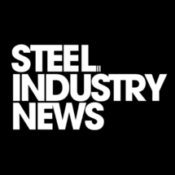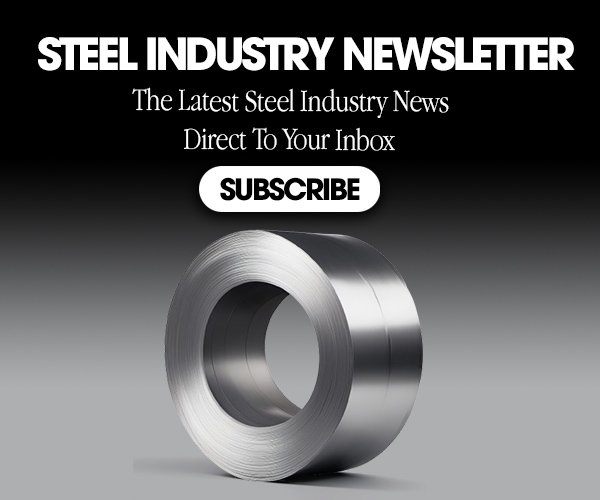Introduction: Inflation Returns to the Forefront
Inflation has once again taken a central position in both economic debates and household concerns across the United States in 2025. After falling from pandemic-era highs, the pace of price increases has picked up in recent months, catching policymakers, industry leaders, and everyday consumers by surprise. In June 2025, the Consumer Price Index (CPI) registered its highest annual increase since February, and new data from multiple sources confirm that pressures are mounting in both headline and core measures of inflation. While some of these trends reflect lingering aftershocks from the war in Ukraine, other forces are now at play—including shifting labor dynamics, supply chain frictions, and an aggressive resurgence of tariffs that are reshaping cost structures across U.S. industries, with a pronounced impact on the steel sector, construction, manufacturing, and automotive markets.
This comprehensive review unpacks the primary drivers of current inflation, quantifies its effects using the latest available data, and drills down into tariff policies—highlighting their role, especially in steel-intensive sectors. Through detailed analysis, tables, and qualitative insights, we show how these forces transmit from the global level down to the price at the checkout counter or dealership.
Section 1: A Detailed Look at the June 2025 CPI Report
The U.S. Bureau of Labor Statistics and independent analysts note that U.S. inflation accelerated in June 2025, with the annual CPI reaching 2.7%, up from 2.4% in May. This upturn marked the second consecutive month of acceleration and was accompanied by a notable monthly CPI jump of 0.3%—the largest in five months.
While energy prices played a significant role—with gasoline rebounding after months of declines—tariff-related pass-through emerged as a primary new force. Within the CPI breakdown, food, shelter, and items sensitive to international trade cost were particularly affected. Furniture, recreational goods, automobiles, and construction materials all saw above-average increases as businesses adjusted their pricing in response to higher import costs.
It’s important to highlight that core inflation, which excludes food and energy, also ticked higher. After three months at 2.8% annually, core inflation edged up to 3% in June, indicating that underlying price pressures are broad-based and not solely tied to fuel or groceries.
Table: Inflation Breakdown by Key Categories – June 2025
| Category | YoY Change | Commentary |
|---|---|---|
| Overall CPI | +2.7% | Highest since Feb 2025 |
| Core CPI | +3.0% | Up from 2.8%; broad-based increase |
| Gasoline | Rebounded | Drove monthly inflation uptick |
| Food at Home | +2.9% | Steady pressure persists |
| Furniture/Toys | ↑ | Sensitive to recent tariffs |
| Automobiles | ↑ | Tariff pass-through increasingly visible |
| Construction Mat. | ↑ | Ripple from steel/input cost increases |
The consensus among analysts is that the costs tied to trade policy are filtering through to the consumer much faster than in previous quarters. “We now see higher inflation in 2025 with a more pronounced and sooner re-acceleration in goods prices,” Morgan Stanley analysts summarized. Market reactions have included renewed caution and speculation about Federal Reserve policy moves, as ongoing price increases threaten to anchor inflation expectations at undesirable levels.
Section 2: The Complex Drivers of 2025 Inflation
Labor Markets and Wage Pressures
A persistent tightness in the U.S. labor market continues to exert upward pressure on wages and, by extension, prices. Although the job vacancies to unemployment ratio (V/U) has eased from its pandemic high of 2.0 in March 2022 to 1.1 in early 2025, it remains above historical averages. This tightness supports wage growth—which benefits workers, but simultaneously increases business costs throughout the economy, notably in services and skilled trades.
According to CEPR research, “inflation is influenced by tightness or slack in the labour market… [and] peaked at 2.0 in 2022, falling to 1.1 in early 2025—still above pre-pandemic norms.”
Supply Chain and Commodity Volatility
Although many pandemic-era supply snarls have subsided, major sectors remain exposed. Rebounding energy prices and periodic global disruptions, such as those affecting natural gas, metals, and industrial inputs, continue to influence final product prices. For the steel industry and construction sector, swings in input costs are quickly magnified as contracts are adjusted and new purchases made.
Tariffs: A New and Potent Source of Inflation
Tariffs have been reintroduced and escalated on a wide range of goods, with steel facing a headline 25% import duty alongside sweeping new tariffs on consumer goods, automotive products, and industrial equipment. Unlike the one-off cost bumps from acute supply shortages, tariffs introduce a structural change, ratcheting up cost bases for importers and spreading through the economy as sellers attempt to maintain profit margins.
Goldman Sachs analysts now project that, in the absence of tariffs, core PCE inflation could have fallen to 2.1% by the end of 2025; instead, with tariffs in force, it could rise to as much as 3.0%. Morgan Stanley puts headline inflation for the year at 2.5%, up from earlier projections of 2.3%, and sees the surge as a direct tariff effect. The year’s pricing narrative has shifted from “slower growth, stickier inflation” to “slower growth, firmer inflation” as tariffs alter the landscape.
Inflation Expectations and Consumer Sentiment
Long-term inflation expectations unexpectedly rose in 2021-2022 and then sharply reversed through 2023/2024 and into 2025. With the Federal Reserve’s aggressive tightening and better-than-expected disinflation, expectations stood at roughly 2.3% in Q1 2025, close to pre-pandemic averages. This relative stability has helped keep inflation in check, but renewed pricing pressures may soon challenge these expectations, particularly if labor and trade policy keep headline inflation high.
Section 3: How Tariffs Transmit Inflation Across the Steel Industry and Sectors
Tariffs, at their core, are taxes on imports. In the steel sector, fresh tariffs instantly increase the cost of overseas steel, influencing every link in the industry’s value chain—from mills, to service centers and distributors, to the customers in construction, manufacturing, and automotive segments.
The Chain of Pass-Through
Steel Producers
Domestic steelmakers initially benefit from import tariffs. With foreign competition curtailed, U.S. mills can raise prices, improve profit margins, and secure market share. The sector often adapts quickly, but also faces potential internal cost hikes—if machinery or key raw materials are imported and tariffed, even domestic producers can feel the pinch.
Distributors and Wholesalers
Distributors, acting as intermediaries between mills and end-users, see their procurement costs jump immediately. Their options are limited: absorb temporary margin hits, or pass costs on to customers, often via revised annual contracts. As steel is foundational for so many U.S. industries, even modest price increases in this sector compound across the wider economy.
Construction, Manufacturing, and Automotive
For these sectors, steel is not just an input, but a critical determinant of project cost and feasibility. Whether erecting a bridge, stamping car parts, or assembling heavy machinery, companies pay higher prices almost instantaneously when tariffs are enforced. This leads to:
- Budget overruns and repricing of contracts, especially for public works and infrastructure projects.
- Delayed or downsized projects, as uncertainty about future costs makes long-term planning hazardous.
- Increased product prices at the consumer level, as automakers, appliance manufacturers, and homebuilders pass along escalated input costs.
Consumers
Consumers ultimately encounter these costs most clearly in big-ticket items. Automobiles, home appliances, large construction projects, and new homes all depend on steel, aluminum, and tariffed goods. In many cases, price increases are phased in over several months, intensifying as inventories purchased at pre-tariff prices are depleted.
Table: Steel-Related Inflation Metrics 2021–2025
| Year | US Steel Import Tariff | Domestic Steel Price | Automotive CPI Component | Construction CPI Component |
|---|---|---|---|---|
| 2021 | 25% | $900/ton | +1.2% YoY | +1.7% YoY |
| 2023 | 10–25% | $1,100/ton | +2.9% YoY | +3.1% YoY |
| 2025 | 25% | $1,400/ton* | +4.7% YoY | +5.2% YoY |
- Benchmark price for hot-rolled coil steel.
Section 4: Measuring Tariff-Driven Inflation in Industry Case Studies
Numerous analyses now document the progression of tariff-driven inflation across sectors. Academic and central bank research confirms that increased trade costs tied to tariffs result in both sharp, short-term price spikes (final goods) and slower, persistent cost increases (when intermediate goods like steel are targeted).
- Case Study: Automotive Sector:
When faced with new 25% tariffs on imported steel and auto parts, U.S. automakers saw input costs increase almost 10% overnight. Attempts to source domestically resulted in higher prices, delays, and capacity bottlenecks. In dealerships, the average new vehicle price increased nearly $1,400 between Jan and June 2025, and market data shows consumers are keeping cars longer or shopping for used vehicles as a result. - Construction and Infrastructure:
With steel comprising a substantial share of construction costs, new tariffs rippled immediately through public infrastructure contracts and the housing market. As one commercial builder put it, “A year ago, we budgeted $1.8 million for structural steel in a major project; with tariffs and delivery premiums, we’re now facing over $2.3 million for the same volume.”
The impact is especially pronounced for government-funded projects and contractors bound by fixed-price agreements.
Research from the Dallas Fed finds “higher trade costs for final goods cause large but short-lived inflation spikes, while increased costs for intermediate inputs trigger more persistent inflation”.
Table: Key Inflation Contributors and Potential Outcomes
| Category | 2025 Impact | Long-term Risk |
|---|---|---|
| Steel Tariffs | Immediate cost increase | Potential capacity shift |
| Construction Materials | Budget/project overruns | Slowed infrastructure |
| Auto Parts & Vehicles | Higher sticker prices | Lower sales/profit |
| Core Inflation (CPI) | Sustained ~3.0% annual | Anchored expectations |
| Consumer Sentiment | Erosion due to rising costs | Increased uncertainty |
Section 5: Sector-by-Sector Impact Recap
Steel Producers
The windfall effect of tariffs for domestic producers can be significant in the short term, as imported steel becomes uncompetitive. U.S. mills notch higher orders and are able to implement price hikes that, in a globalized market, would have been unsustainable. However, historical data and research underscore that these gains are often temporary. As downstream sectors struggle with higher input costs and possible retaliatory tariffs from trading partners, demand can be dampened or redirected.
Steel Distributors
Distributors act as shock absorbers, attempting to balance cost increases from mills against price sensitivity among end-users. Their margins are squeezed unless they can pass price hikes on quickly and efficiently, which becomes challenging in a volatile pricing environment. As contracts are rewritten and customers push back, distributors may see periods of reduced demand or payment delays.
Construction
Tariff-driven increases in steel prices directly inflate construction costs. For privately funded projects, developers are forced to reevaluate budgets and, in some cases, postpone or cancel work. In public infrastructure, the blowback is felt in state and municipal budgets, leading to project reranking and longer completion times.
Manufacturing
Manufacturers relying on steel—in sectors like equipment, appliances, transportation, and machinery—face narrowed profit margins and greater uncertainty. Many have implemented strategies to hedge against price increases, but prolonged cost escalation is unsustainable. Companies may shift operations or seek substitutes, but these changes introduce their own disruptions.
Automotive
Automakers have relatively less flexibility due to the specificity of steel grades required. As a result, tariffs translate quickly and almost entirely into consumer prices. New car buyers face sticker shock, while used car demand—and prices—rise in tandem.
Section 6: Broader Macroeconomic and Policy Implications
With headline and core inflation moving upward, monetary policymakers face difficult choices. Federal Reserve officials have signaled a willingness to tolerate moderately above-target inflation in the short term, but persistent pricing pressure could force future rate hikes or tighter credit conditions.
Tariffs’ blunt nature also raises questions for U.S. trade policy. While they can support domestic industries in the short run, economic research consistently shows that foreign retaliation and supply chain disruptions often undermine the intended benefits, creating scenarios where “potential gains are neutralized by counteractions”. Both government and industry analysts caution against expecting long-term prosperity from unilateral tariff actions.
Section 7: What to Watch Next
Looking ahead into late 2025 and early 2026, industry leaders, consumers, and policymakers will closely monitor:
- Additional rounds (or reductions) of tariffs and resulting trade partner responses
- Continued trajectory of wage growth and labor market tightness
- Shifts in global commodity prices, especially for energy and metals
- Changes in CPI components, with particular attention to core and goods inflation
- New Federal Reserve communications or actions if inflation remains above target
Stakeholders across the value chain—including steel producers, distributors, construction firms, and automakers—should prepare for volatility and seek flexible, forward-looking procurement and risk management strategies.
All information provided in this article is for informational purposes only and does not constitute financial advice.
SOURCES
https://www.cbsnews.com/news/inflation-trump-tariffs-economists-forecast-2025/
https://cepr.org/voxeu/columns/rise-and-retreat-us-inflation-update
https://www.cnbc.com/2025/06/11/heres-the-inflation-breakdown-for-may-2025-in-one-chart.html
https://tradingeconomics.com/united-states/inflation-cpi
https://www.imf.org/-/media/Files/Publications/WP/2025/English/wpiea2025094-print-pdf.ashx
https://www.nerdwallet.com/article/investing/inflation
https://www.bls.gov/news.release/cpi.nr0.htm
https://www.semanticscholar.org/paper/261e63fe92f9070fb60fb0d36ad1618cfb655cab
Check out the latest resources
- Nucor’s Six-Week Price Surge: What It Signals for the Steel Market
- Nucor Increases Steel Prices Again
- Steel Industry and Manufacturing Demand: Understanding the Critical Decline in HVAC and Agricultural Equipment Sectors in 2025
- Steel Prices in November 2025: Market Dynamics, Price Drivers, and Industry Outlook
- The Dodge Momentum Index October 2025: Understanding Commercial Planning Momentum and Its Impact on Construction Spending
📬 Enjoying this article? Don’t miss the next one.
SUBSCRIBE below to the Steel Industry News email newsletter to get the latest updates delivered straight to your inbox. Includes a comprehensive reporting of all key topics impacting the steel industry. 🌍The Most Recent Steel News Reports — in one easy-to-read weekly format
🔐 Annual Plan: Just $300/year – that’s 6 months free . – 💰 Best value of unbiased, timely reporting in the industry.
🤝Operational Support: Your paid subscription support helps keep Steel Industry News independent and ad-light
FREE for paid subscribers
🎧 Exclusive Steel Industry News Podcast— Listen on the go! Includes insights, trends & commentary you won’t find anywhere else
📘 Exclusive EBooks
📘 The Steel Handbook – A Guide To Understanding Steel
📘 Lucky 13: Proven Strategies to Boost B2B Sales Performance
📘 Purchasing Strategies For Success
📘 AI for Steel and Manufacturing: Unlocking Innovation and Efficiency
📘 Cybersecurity in Steel and Manufacturing: Protecting Your Assets in a Digital Age
📊 Steel Industry Insights – Our Insights & Guide track key market indicators weekly —like mill pricing, input costs, and demand trends —to help readers clearly understand what’s driving steel prices and where the market is headed.









